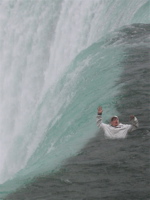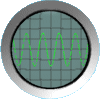 |
VO-BB - 20 YEARS OLD!
Established November 10, 2004
|
| View previous topic :: View next topic |
| Author |
Message |
BenWils
The Thirteenth Floor

Joined: 08 May 2006
Posts: 1324
Location: In a Flyover State
|
 Posted: Wed Nov 25, 2009 11:58 am Post subject: Booth Ventilation Posted: Wed Nov 25, 2009 11:58 am Post subject: Booth Ventilation |
 |
|
Hello Everyone,
Just wanted to see if anyone had any good ideas for my specific situation. Any tips or thoughts are appreciated.
I have a booth with ventilation currently mounted on the booth itself. I bought it with a remote switch so that I can turn it on and off at will when in the booth. The main issue is that since the ventilation is mounted on the booth (regardless of the rubbery shock absorbing stuff they added to the mount) it makes too much noise to have on during recording. And using the remote to turn it on and off....getting the fan going....waiting for it to shut off completely. In our world, when they want to go for another take, telling someone to wait for your ventilation to power down is not kosher. I usually just open the door and swing it to and fro to get some air in the booth.
Anyway, I decided to get some aluminum flex tubing and a two duct connecters. I put the fan in the duct connector and connected the flex tubing to get the fan off of the booth itself and separated. It was definitely more quiet, however, I still hear a something. Not sure if it is just the moving air or the hum of the fan motor making its way back to the booth via the aluminum flex piping. Mind you the air comes in the booth and makes a few twists and turns in a plenum box where the fan was previously mounted. The input comes into the booth at the top of the booth at about 6 feet and has a metal grate on it reflecting the air to the left and right. As far as reducing the small amount of noise I was getting, I even tried to stretch the tubing with the fan mounted in it outside of the room. It wasn't much better. I guess the idea for the booth was to get away from fan noises and air flow etc. I know am splitting hairs here.
My father suggested getting a dimmer switch and trying that in order to slow the fan down. I did, and it helped with the noise and was sending some air in the booth. I just had second thoughts about having that dimmer running on a fan motor. It said you're not supposed to use it on motorized appliances. And again, I was still getting a slight amount of air noise.
So, did I try to use the wrong tubing? Is there a better kind to use that transmits less noise or quiets air flow better? Is there an ultra quiet fan out there that someone has had tremendous luck with. Am I always going to have issues with hearing the airflow in a 4x4 booth? I ideally would like to have the air on all the time so as to not cook in the booth, which has a light and a monitor.
I know the monitor is my main source of heat....I am just trying to see if there are any solutions I haven't thought of.
Thanks for any suggestions and Happy Thanksgiving to all!
_________________
Ben
"To be really good at voiceover, you need to improve your footwork and hip snap." |
|
| Back to top |
|
 |
Bruce
Boardmeister

Joined: 06 Jun 2005
Posts: 7980
Location: Portland, OR
|
 Posted: Wed Nov 25, 2009 2:36 pm Post subject: Posted: Wed Nov 25, 2009 2:36 pm Post subject: |
 |
|
As far as the noise, distance, plenums, sound absorption in the plenums or ducts, and different fans are the best things to look at. And as far as the dimmers, there are switches meant for motors (depending on the motor). Call or visit a big electrical supply house with your fan motor or the specs for it and they should be able to help.
B
_________________
VO-BB Member #31 Enlisted June, 2005

I'm not a Zoo, but over the years I've played one on radio/TV. . |
|
| Back to top |
|
 |
BenWils
The Thirteenth Floor

Joined: 08 May 2006
Posts: 1324
Location: In a Flyover State
|
 Posted: Wed Nov 25, 2009 3:15 pm Post subject: Posted: Wed Nov 25, 2009 3:15 pm Post subject: |
 |
|
Good idea, Bruce. I will do that after the holiday. Thanks!
_________________
Ben
"To be really good at voiceover, you need to improve your footwork and hip snap." |
|
| Back to top |
|
 |
brianforrester
Backstage Pass

Joined: 30 Jul 2005
Posts: 492
Location: Vancouver, British Columbia, Canada
|
 Posted: Wed Nov 25, 2009 8:53 pm Post subject: Posted: Wed Nov 25, 2009 8:53 pm Post subject: |
 |
|
My suggestions...
1. Don't mount the fan on any surface through which vibration could be transferred to your booth (especially a 4x4 as it's like a big ass bass tube).
2. Rigid duct work, not flex, unless the flex is secured within a wall structure where there is no possibility of it moving. The air flow within flex tube can cause it to move, movement causes noise and any noise within a long hollow tube will be amplified.
*Note if you do run the vent line within a wall, make sure that there's the same amount of sound insulation around the vent as there is in the rest of your wall structure, otherwise your vent line now becomes a wall void and the weakest point in an otherwise well insulated wall, through which sound WILL travel.
3. Baffles, air diversion or vent line bends. You do not want to have the air moving along any uninterupted distance, as the air velocity itself will cause noise. Make sure that there is at least one 90 degree turn before the outlet (I'd probably do 2), and add some form of air flow disturbance baffle in longer vent line runs.
4. Disperse the air over as large an area as possible before it enters your booth, to decrease the air velocity
I'd employ one of 2 methods:
a. increase the vent line diameter as it moves away from the fan... this is the exact opposite of what is done in residential hvac systems, as residential wants to maintain velocity over long line runs; in our case we want to decrease velocity.
b. If you have a 4' rigid duct line, I'd make the outlet vent a minimum of 10' inches, however very important... have the air run over the surface of the vent (parallel movement) as opposed to directly towards it (vent line perpendicular to the outlet vent)... this will disperse the air over a greater outlet surface and reduce the velocity of the air at the vent, thus reducing noise.
Some may think I'm crazy with these ideas and they may be right as I'm by no means either a booth designer or hvac guy; I've just spent a lot of time trying to plan out my new booth, and air movement has been one of my big concerns. In theory this seems like a good solution to me, but I'll admit, it's only theory at this point.
If anyone can tell me that I'm nuts and show me the error of my logic (or complete absense of any, as may be obvious to those more edumicated than me), I'd really appreciate it, as it will save me a whole bunch of hassle in a few months!
Cheers,
_________________
Brian Forrester Voice Overs
www.brianforrester.com
brian@brianforrester.com
778.668.5715 |
|
| Back to top |
|
 |
Charles Nove
Contributor III

Joined: 26 Jan 2007
Posts: 98
Location: London, England
|
 Posted: Thu Nov 26, 2009 12:16 am Post subject: Posted: Thu Nov 26, 2009 12:16 am Post subject: |
 |
|
Our main booth is vented using the following arrangement:
150mm flexible ducting to a grille in the booth ceiling. Approx 6ft away from the grille, the air passes through a duct silencer (a marvellous cylindrical device, just like the silencer in a car exhaust system. It's about twice the diameter of the duct and has ingenious baffles and perforations inside) then another 6ft of duct, then an inline duct fan, then another length of duct to the intake or outlet point.
We have two of these, one bringing air into the booth and one taking it out. The grilles are at opposite ends of the booth, so as to make sure the air flows through the space.
It works very well, and very quietly. We fitted it with fan speed controllers but, in practice, we found we could leave the fans running at full speed once we worked out the right grille arrangement. Original design used circular vents, with an adjustable central cone. That was too noisy. Replaced with square diffusion grilles. Better, but the air inlet one was still producing a rushing noise. Some improvement was achieved by increasing the distance between the incoming duct and the grille, but by far the best result was when we left the grille off and just let the duct unload its air with nothing in the way, so that's what we've stuck with!
_________________
Charles Nove
Scottish voice-artist, to the world ... and beyond!
www.charlesnove.com |
|
| Back to top |
|
 |
Mike Sommer
A Hundred Dozen

Joined: 05 May 2008
Posts: 1222
Location: Boss Angeles
|
|
| Back to top |
|
 |
BenWils
The Thirteenth Floor

Joined: 08 May 2006
Posts: 1324
Location: In a Flyover State
|
 Posted: Fri Nov 27, 2009 8:50 am Post subject: Posted: Fri Nov 27, 2009 8:50 am Post subject: |
 |
|
Thank you Brian, Charles and Mike. Those are all great ideas. I really appreciate your time in responding.
_________________
Ben
"To be really good at voiceover, you need to improve your footwork and hip snap." |
|
| Back to top |
|
 |
Living Culture
Contributore Level V

Joined: 14 Oct 2007
Posts: 189
Location: Taipei
|
 Posted: Tue Dec 01, 2009 9:57 am Post subject: Posted: Tue Dec 01, 2009 9:57 am Post subject: |
 |
|
Sorry, I have nothing helpful to add about the fan (have same problem myself), but it should be noted:
| Quote: | | My father suggested getting a dimmer switch and trying that in order to slow the fan down. |
is a bad idea. Dimmer switches are best left out of circuits in recording environments.
_________________
Mandarin Chinese Voiceovers & Localization
http://lcmsmedia.com
http://imagesbykenny.com/ |
|
| Back to top |
|
 |
|
|
You cannot post new topics in this forum
You cannot reply to topics in this forum
You cannot edit your posts in this forum
You cannot delete your posts in this forum
You cannot vote in polls in this forum
|
Powered by phpBB © 2001, 2005 phpBB Group
|



